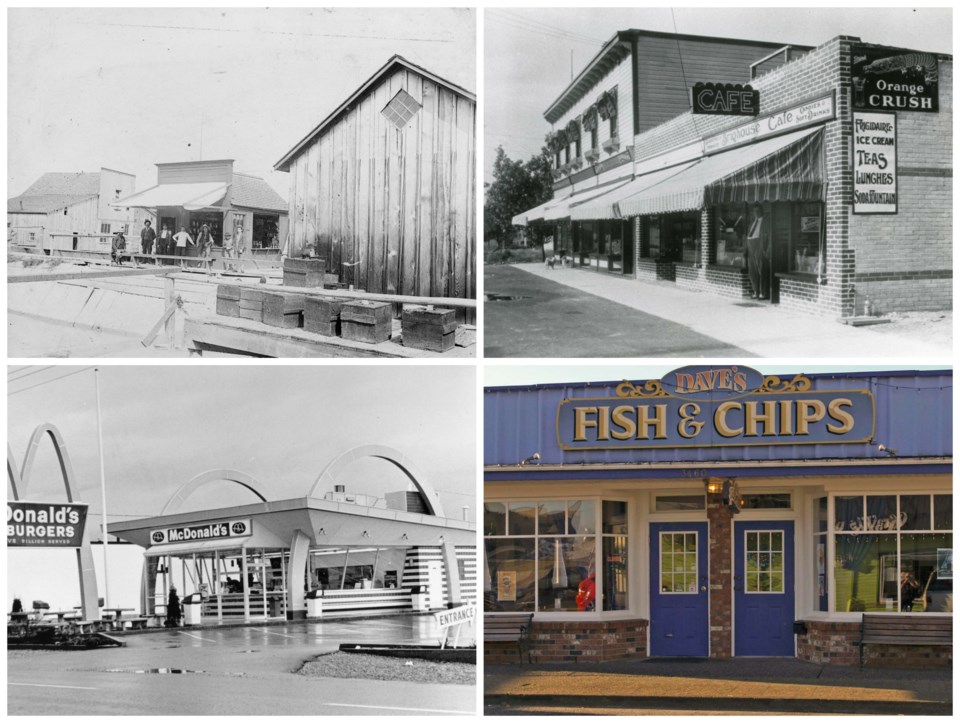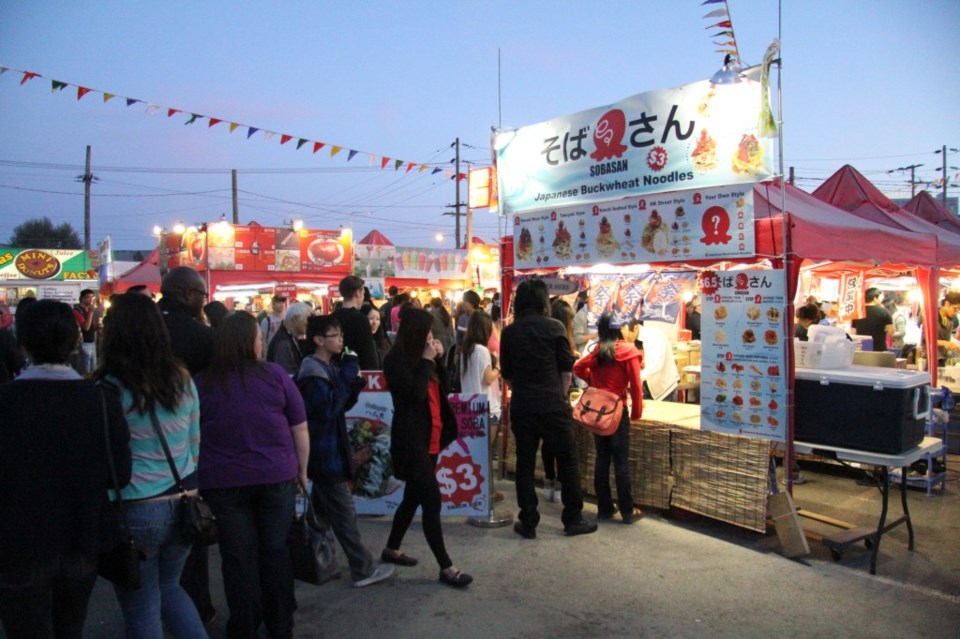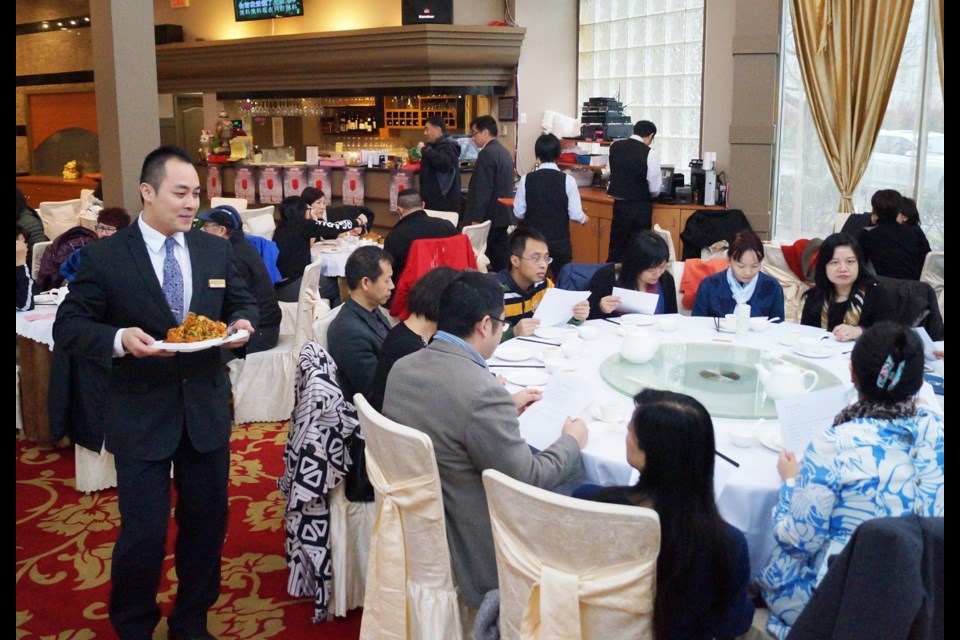The biggest quandary when it comes to dining out in Richmond today is choosing where to go.
The city’s restaurant industry has exploded over the last two decades and in the commercial hubs, it seems you can’t take two steps without finding yourself outside the door of a food-serving establishment.
But it wasn’t always that way. Richmond resident Jackie Brown has lived in the city since 1952 and recalls a childhood where eating out was not part of the lexicon and restaurant choices were few and far between.
“I think people were a lot more frugal in those days and we mostly ate at home or at the homes of relatives,” she said.
“Growing up with Depression-era parents, most families had only one income earner and we watched every penny. I don’t remember going to restaurants until I was in my early teens.”
By 1965, Brown was meeting friends at the Brighouse Café, a modest Chinese restaurant on No. 3 Road, where a $3 serving of chicken chow mein could fill two teenage bellies.
Richmond’s first A&W opened in 1962, a drive-in diner where waitresses on roller-skates delivered food trays to patrons’ vehicles.
“For us, that was pretty exciting,” recalled Eunice Robinson, who lived in Richmond until 1969. Among her favourite eateries in the 1960s was Chipper’s Restaurant on No. 3 Road, a basic burger joint where she would meet her friends for burgers and fries.
“But we’d only go on weekends and certainly not every weekend, because the burgers were expensive for us. We had no jobs and babysitting paid just 50 cents an hour, so eating out was a real treat.”

The opening of the Oak Street Bridge in 1957 and the Massey Tunnel in 1959 led to huge population growth in Richmond.
In 1956, there were close to 26,000 residents, a number that grew to 50,000 by 1966 and increased to 80,000 10 years later.
McDonald’s opened its first Canadian restaurant in Richmond in 1967 and Robinson remembers it causing a stir in the community.
“Everyone had heard of Ronald McDonald,” she said. “The burgers were 39 cents and you could get a burger, fries and a Coke for a dollar, something we considered a real deal!”
Richmond’s first major subdivisions came into being in the decade that followed and Jon Henderson, a local teacher back then, was one of the first to move into the Rideau subdivision in 1976.
“I don’t know that there were a lot of restaurants in Richmond at that time — enough to suit our needs, but nothing like there is today,” he mused.
“We’d frequent Bella’s Pizza at the St. Albans-Granville strip mall and Crono’s Pizza on Minoru Boulevard. We’d also go to Dave’s Fish & Chips and the Charthouse Restaurant in Steveston.”
Dave Scott opened Dave’s Fish & Chips, a longtime local favourite, in 1978 on Chatham Street as a small take-out restaurant.
It moved to Moncton Street six years later and became a 58-seat dine-in eatery with a take-out option. Dave’s is among Steveston’s longest standing restaurants.
As more women entered the workforce in the 1970s and 80s, eating out became a more acceptable means of feeding a busy family with two incomes.
Brown said her propensity to dine out changed considerably in those years after she married and started a family.
“With my husband and I both working full time, there were nights when it was easier to pop out and grab a bite to eat, particularly if our kids had sports or activities,” she said.
Kajak’s steaks and pastas, as well as its dance floor in north Richmond, made it an appealing venue when Brown and her spouse headed out on a date night, while the Sirloiner on No. 3 and Cambie served a good buffet.
Robinson also began eating out more, tempted by the increase in the number of restaurants, coupled with her entry into the workforce and a disposable income. By 1974, when her parents moved from Sea Island, they would get together at Banners Restaurant at Broadmoor to host clan gatherings.
Asian explosion changed scene and habits
Nathan Fong, a Vancouver food stylist and writer, says Richmond was better known for its “continental” restaurants 30 years ago, and for fish and chips in Steveston.
“Richmond wasn’t known for its Asian cuisine back then,” he said, recalling a review he wrote on the Chatham Street restaurant La Pergola, “forgotten now, but it was an amazing Italian restaurant owned by two Italian brothers.”
Things changed in the 1970s, when the uncertainty of the upcoming turnover in China brought many Hong Kong immigrants to the Lower Mainland, and with them, high-end restaurants, noodle shops and BBQ shops.
Richmond’s population grew by 28,000 between ’76 and ’86 and by a whopping 46,000 between ’86 and ’96.
Fong said he’s seen the city’s restaurant scene change most dramatically in the past decade, with the influx of mainly Mandarin-speaking Mainland Chinese and Taiwanese immigrants.
“Many northern style, Beijing, Shanghainese and Taiwanese restaurants have opened,” he said.
Numbers from the City of Richmond’s business licence base evidence this growth.
Neonila Lilova, the city’s economic development manager, notes that there were 711 food service restaurants in February 2016 — excluding bars.
In 2009, there were 372 restaurants in that category, a 91 per cent growth in the past six years.
To some extent, the restaurant growth can be attributed to the dining out proclivities of Asian immigrants, which differ markedly from those of Caucasians.
“Chinese will dine out more regularly as an everyday routine,” Fong said.
“For example, you’ll find Asian families having dim sum, dinners or a quick noodle nosh at a BBQ noodle shop. By contrast, I think dining out for Caucasians or Westerners is more social and special-event driven — to commemorate anniversaries, dates or birthdays.”
Stephanie Yuen, a Vancouver food journalist, agreed.

“Asians, especially Chinese, enjoy eating out for no special reasons or occasions,” she said.
“We are prone to inviting friends and relatives to dinner in a restaurant rather than at home and choose to conduct social gatherings during meal times in restaurants.”
Referring to the massive growth in Richmond’s restaurant numbers, Yuen said that restaurants have been among “the top choices for immigrant business entrepreneurs, including those who had no prior (food and beverage) and hospitality experience.
“The erection of Asian shopping centres and strip malls has created opportunities for those who want to put a foot into the seemingly flourishing restaurant industry and as a consequence, we have more and more Asian restaurants bombarding the local market — Japanese, Vietnamese, tea shops and cafes, Shanghainese, Szechuanese and specialty eateries,” she said.
Can Richmond continue to accommodate such rapid growth in its restaurants? Only time will tell.



